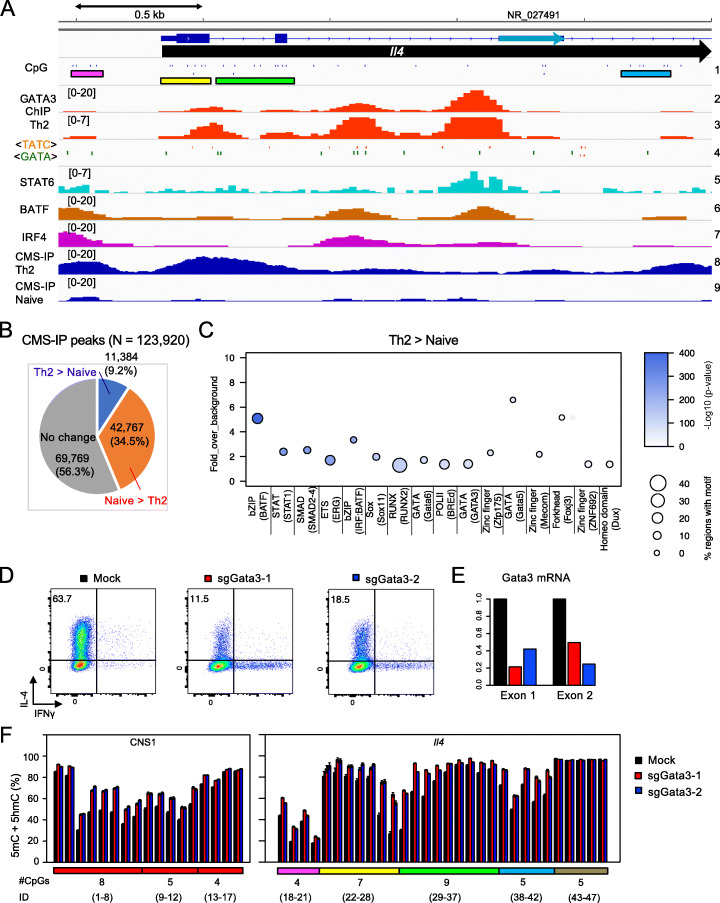Fig. 4.
GATA3 is partly responsible for Il4 locus demethylation. A Genome browser view of the 5′ half of the Il4 gene. Track 1: CpGs are shown as short vertical blue lines. CpGs belonging to different amplicons are indicated by colored horizontal bars as in Fig. 1C [i.e., magenta bar for promoter CpGs, yellow bar for exon 1, green bar for intron 1-exon 2, etc.]. Tracks 2 and 3: GATA3 ChIP-seq profiles (GSE28292) at two different scales (0–20 and 0–7) in Th2 cells. Track 4: Positions of known GATA binding motifs (TATC and GATA). Tracks 5–7: ChIP-seq profiles for STAT6 (GSE22104), BATF (GSE85172), and IRF4 (GSE85172) in Th2 cells. Tracks 8 and 9: 5hmC profiles in Th2 and naïve CD4+ T cells respectively, determined by CMS-IP. Note the presence of 5hmC at regions occupied by transcription factors. The rightmost 5hmC/CMS-IP peak does not correspond to a region with GATA3, STAT6, BATF, or IRF4 occupancy. B Number of differentially hydroxymethylated regions (DhmRs) in naïve CD4+ T cells compared to Th2 cells. C Motif enrichment analysis of DhmRs that are enriched in Th2 cells compared to naïve T cells. The y axis indicates fold enrichment versus background, circle size indicates the percentage of regions containing the respective motif, and the color indicates the significance (-Log10 (p-value)). D Flow cytometry plots showing IL-4 and IFN-γ production by Th2 cells that were transduced with retroviral vectors encoding control or Gata3 sgRNA. Data are representative of two independent experiments. E Gata3 transcripts were quantified by qRT-PCR and normalized to Gapdh and then to the level of empty vector control. F A bar graph depicting the percentage of (5mC + 5hmC)/total C in 47 CpGs in the Il4 locus in cells transduced/electroporated with control vs. Gata3 sgRNA, as determined by BS-seq. Data are representative of two independent experiments

